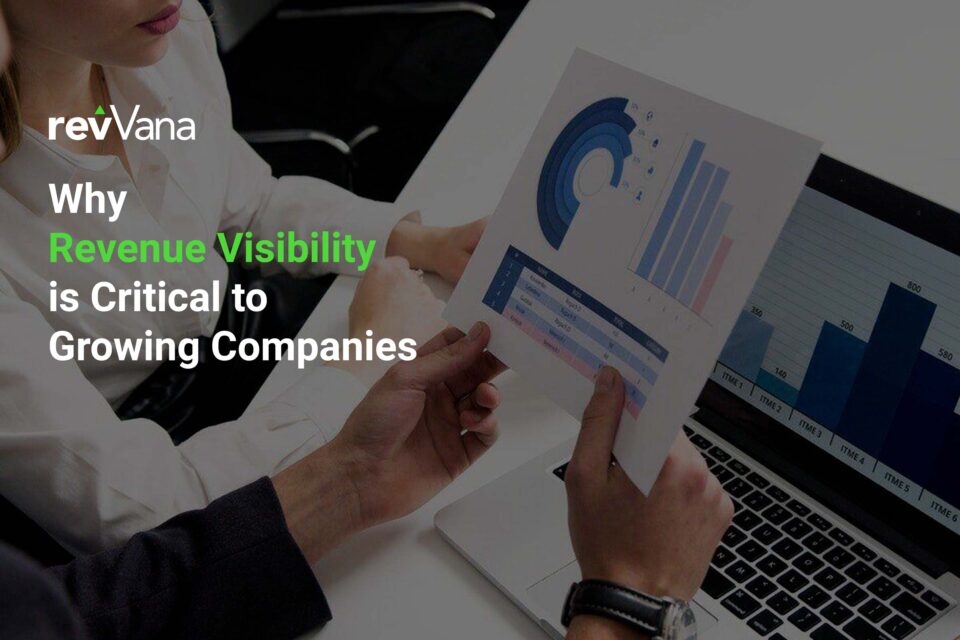

What Is Revenue Operations (RevOps) and Why Is It Important?
Learn about Revenue Operations (RevOps) as a strategy to align siloed revenue teams within B2B and B2C companies and unify revenue goals and targets.

Published on Friday, April 16, 2021
While raising money from outside investors is a celebrated and critical moment for every growing company, the need for visibility into your growth prospects will be a large area of focus for these investors as you continue to grow and scale.
The most important metric from growing companies is their ability to hit revenue growth targets to validate their current and future valuation. While sales pipelines provide a point in time snapshot of deals expected to close, the revenue generated over time from these opportunities is an overlooked part of the equation.
This article will explore what information your pipeline divulges and the next required step to translate that piece of your business into your value on revenue growth.
A sales pipeline is defined as the number of opportunities you have lined up to ensure you reach your sales goal.
Commonly, a pipeline is a funnel that consists of various stages. As such, a sales pipeline gives you the ability to manage and track many potential customers at once, at every individual stage of the sales process.
The pipeline is advantageous to sales teams for a variety of other reasons too. For instance, it can clarify your marketing efforts’ overall health and where your sales teams are currently focused. Also, pipeline and the related bookings from the pipeline allow sales teams to monitor their sales productivity and achievement to quotas more effectively.
More importantly, your pipeline tells a story in terms of your financial timeline and can help you forecast future revenue. Not only can this help with cash flow management, budgeting, and sales analysis, but it can also help to validate your expected valuation growth as well as timing for new investments to accelerate growth potential further.

Why Are Investors Interested In Your Sales Pipeline?
Outside investors require a higher level of visibility into their investments. Pipelines generated in CRM systems like Salesforce are a typical way that investors obtain visibility. They want to know that:
These factors help investors objectively validate their portfolio and growth opportunity to ensure that they have the best odds of getting a great return on their investments. In other words, they only concern themselves with fact-based claims that come with supporting information, data-driven history, and processes that can support future financial forecasts.
The more explicitly you can prove high revenue potential to a potential investor, the better your chances are validating and growing your future valuation.
While forecasts are the most critical point of information to investors, they may consider some other areas when deciding to put money into a business. For example, most investors are on the lookout for a demonstrated market fit.
Here, you could make use of sales metrics to make your case. For example, you could use your annual recurring revenue to illustrate your business model’s top line. Or, you could use your win rate and conversion rate as a reference for the success of your products.
You may also want to include metrics like average deal size, average profit margin, churn rate, and net retention percentage to indicate your current customer base’s quality. These metrics will help you to prove to investors that you’re able to meet your goals.
By now, we should all be aware that investors’ primary objective is to invest in a growth-oriented organization that will provide a return on their investment. By focussing on the metrics listed above and connecting your future revenue forecasts to your current pipeline, you can easily catch investors’ attention. Diligence and details in your financial forecast are essential.
A forecast of your revenue shows it is the top line growth target for future financial periods. So, how do you forecast revenue? There are many ways to forecast revenue.
You could take a mathematical approach and forecast your revenue using Linear Regression or Exponential Smoothing, for example. Or you could make sure of seasonal and market trends to anticipate what your future revenue will be.
Each method varies in accuracy and comes with its benefits and downfalls. But what about using your pipeline to forecast your revenue?
Once you have created your pipeline, you can begin to use it for forecasting. An excellent place to start is by figuring out weighted revenue by looking at your pipeline. This method is based on the idea that each opportunity or lead has a different likelihood of being closed.
Essentially, each opportunity is assigned with a percentage that represents its likelihood of being closed. From here, the total expected revenue from that opportunity is multiplied by the percentage to calculate the weighted value. After you’ve calculated each opportunity’s weighted value, you add them all up. From here, you have a reasonable estimate of your future revenue for investors to consider.
Some, however, argue that this is not enough and that forecasting your revenue using your pipeline should be taken a bit further. For instance, it is suggested that real-time forecasts are more likely to grab the attention of investors.
With revVana, for example, you have the power to forecast revenue from both your open and closed sales commitments over time. The tool provided by revVana also creates forecasts all every sales level (i.e. each stage in the sales pipeline), including account and opportunity levels, for instance. Further, you can create rules to create forecasts based on your organization’s sales processes and stages.
It doesn’t even stop there. All of these forecasts can be automated! And, if you use revVana’s other product called Insights, you can analyze your forecasts in depth.
Automation can provide a bridge to the gap between pipeline and forecast. It may sound tricky, but it doesn’t have to be! Don’t let the terminology and complex-sounding methods scare you away. revVana can assist with all of your forecasting needs.
The fact of the matter is that many businesses need investors. Without them, organizations would not be able to scale operations to meet growth goals. This is especially true for startups and SaaS businesses that need their pipeline to justify revenue growth directly tied to the company’s valuation.
Moreover, investors can bring valuable connections and insights into an organization, which can increase growth potential. As such, businesses must prepare their financial and sales data to secure investments.

If your sales pipeline is in good shape and you present investors with excellent data and forecasts, you should be on your way to growth. This is where revVana comes in. The conversion of pipeline to revenue, and the timing of this, is critical. revVana can help you get all of this in order, so contact us today!